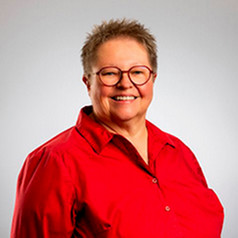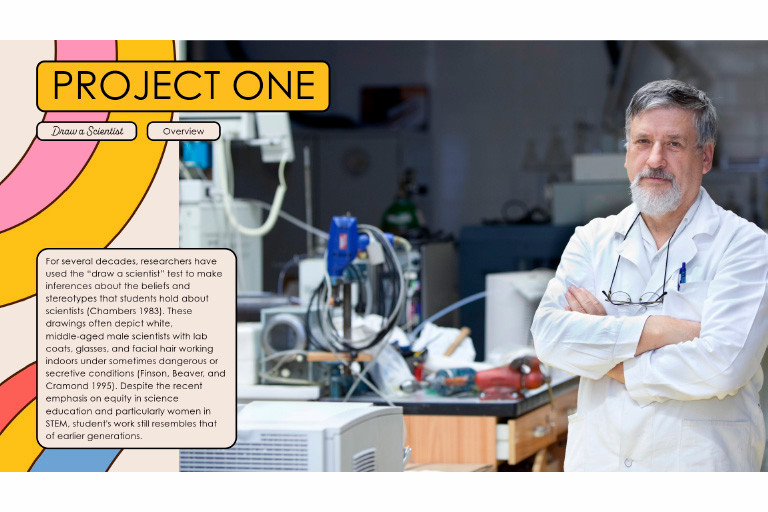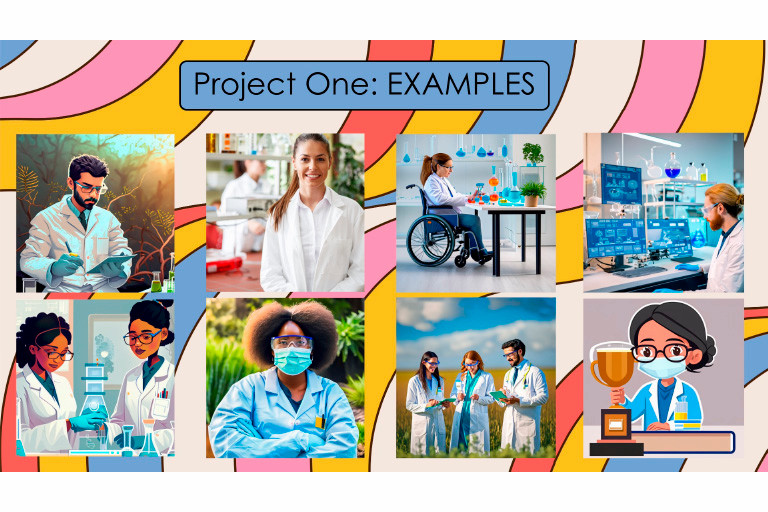"As educators, we know that our job is to ensure students are ready to participate in a workforce that will undoubtedly include AI tools. Integrating technology into daily practice within the classroom is no longer a choice but a prerequisite for preparing students for a tech-infused future." (Jennifer Cronk, February 2024, ISTE Learning Library)

Terri Hebert
Associate Professor, Elementary Education & Digital Gardener Faculty Fellow, IU South Bend
Q: What led you to incorporate generative AI?
A: During my participation in the Digital Gardener Initiative, I learned about Adobe Express and Firefly and, in particular, the use of "text-to-image." I really enjoyed the experience and found the Adobe products to be pretty intuitive to use. I decided to give it a try within my science methods classroom.
As I looked through my list of assignments, I thought the activity called "Draw a Scientist" lent itself most to the transition. So I worked up a simple rubric and list of instructions to provide to my students during the class focused on this activity. This semester, I plan to have them do this activity at both the beginning and end of the semester to see how their views evolve.

Q: What did you hope to achieve?
A: I thought it might be interesting for my students—who are becoming elementary teachers of science—to try their hand at this activity, especially if they used AI rather than drawing the figures by hand. So many immediately say that they cannot draw, which then puts up all sorts of barriers to the activity.
I also thought it would be fun to show them a positive side to AI, since so many already had developed negative connotations about it. As educators, we can find positive ways to use AI in the classroom rather than immediately shut it down because of fear or stigmas surrounding it. This way, they come out with some familiarity and comfort with using AI.
Q: How did it go?
A: I was dumbfounded by the results! They definitely didn't follow the norms that had been published the previous five decades (previous drawings tended toward Einstein). Students had scientists as young women, out in nature, wearing cool clothes—and some even had a wheelchair or a prosthetic limb.

Very cool! We had a great discussion about why they created their scientists as they did, and how that compared to the study's results. It really opened up the discussion beyond my expectations. I was impressed by how much my students understood about teaching science and what can be included in the lessons, as well as where the learning can occur.
Q: How has this experience affected your teaching?
A: I am going to use it again this semester, and I am curious if this will become a trend with similar results. The only change I made to the activity from spring semester to this fall is that I improved the rubric for my students, clarifying some confusing attributes.
I think this type of activity really advances community-building efforts as it opens up the discussion to include everyone, and it provides a deeper understanding of what they think of science education and scientists. The point being that everyone is a scientist and what we do in the classroom can be strengthened if we use similar skill sets—questioning, observing, communicating.
Become a Digital Gardener Faculty Fellow: Applications for the Spring 2025 cohort are due by December 2.

